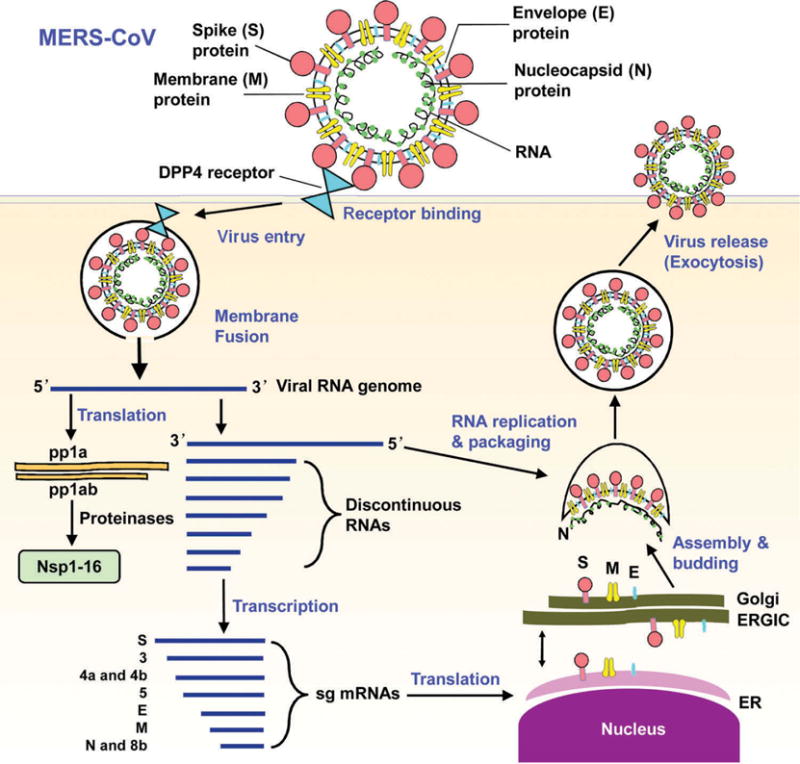Figure 1.

Schematic diagram of MERS-CoV life cycle [8,39,42,43]. MERS-CoV binds to its cellular receptor DPP4 via the S protein and then enters target cells, followed by fusion of the cell and virus membranes and release of the viral RNA genome into the cytoplasm. The open reading frame (ORF), 1a and 1b, in the viral genomic RNA is translated into replicase polyproteins pp1a and pp1ab, respectively, and then potentially cleaved by papain-like protease (PLpro), 3 C-like cysteine protease (3CLpro, main protease), and other viral proteinases into 16 nonstructural proteins (nsp1–16). A negative-strand genomic-length RNA is synthesized as the template for replicating viral genomic RNA. Negative-strand subgenome-length mRNAs (sg mRNAs) are formed from the viral genome as discontinuous RNAs and used as the template to transcribe sg mRNAs. Viral N protein is assembled with the genomic RNA in the cytoplasm. The synthesized S, M and E proteins are gathered in the endoplasmic reticulum (ER) and transported to the ER-Golgi intermediate compartment (ERGIC) where they interact with the RNA-N complex and assemble into viral particles. The viral particles are maturated in the Golgi body and then released from the cells.
